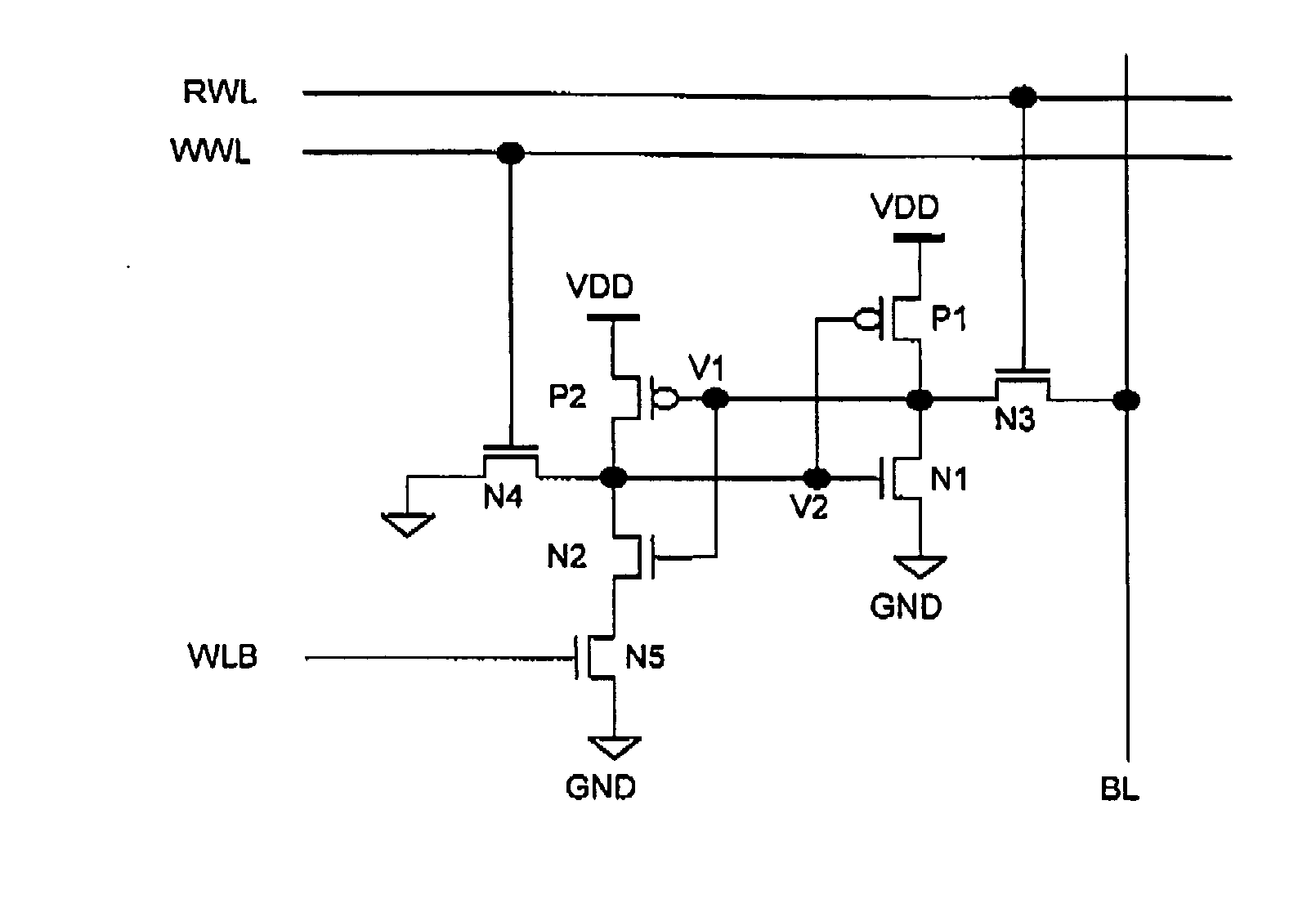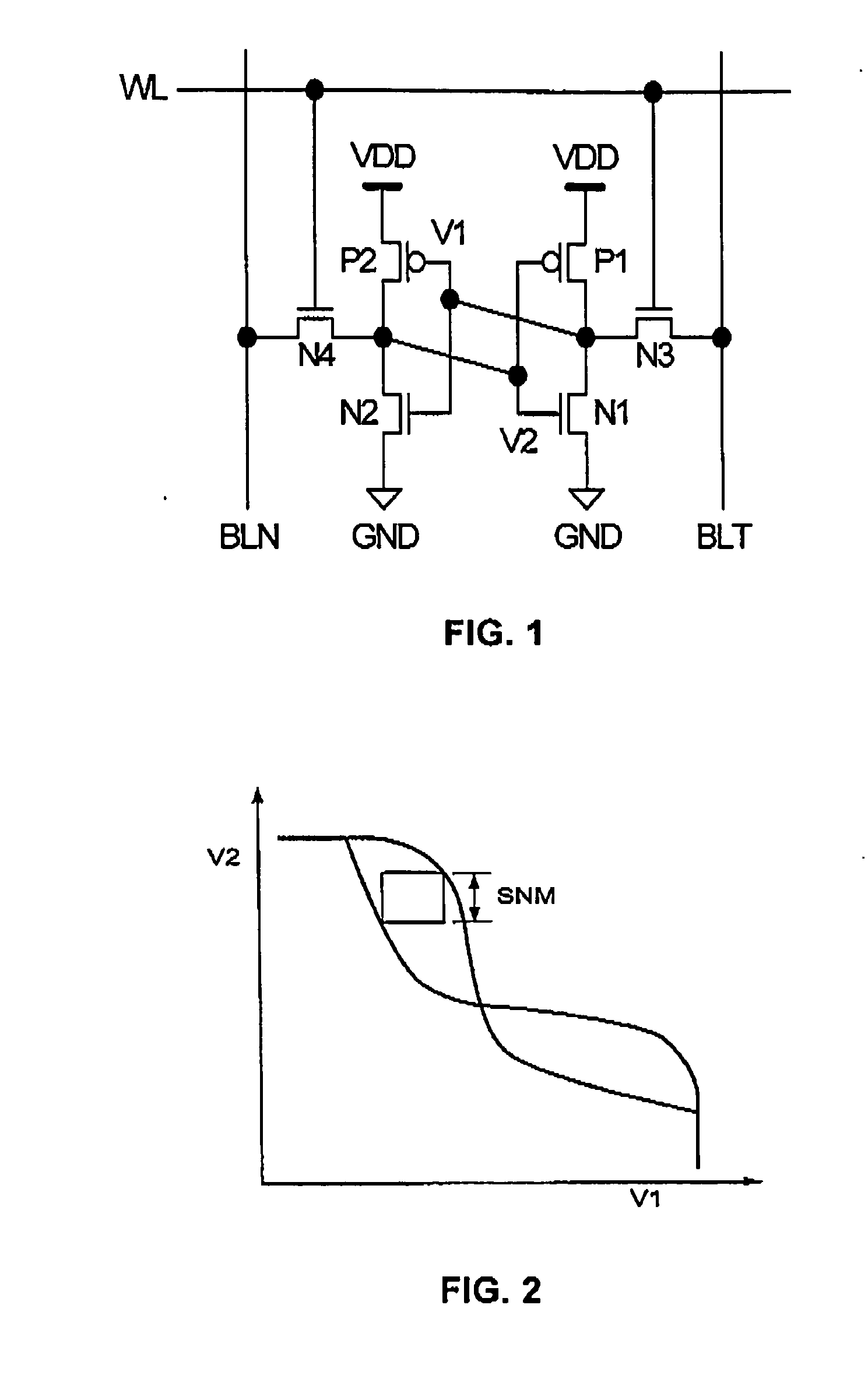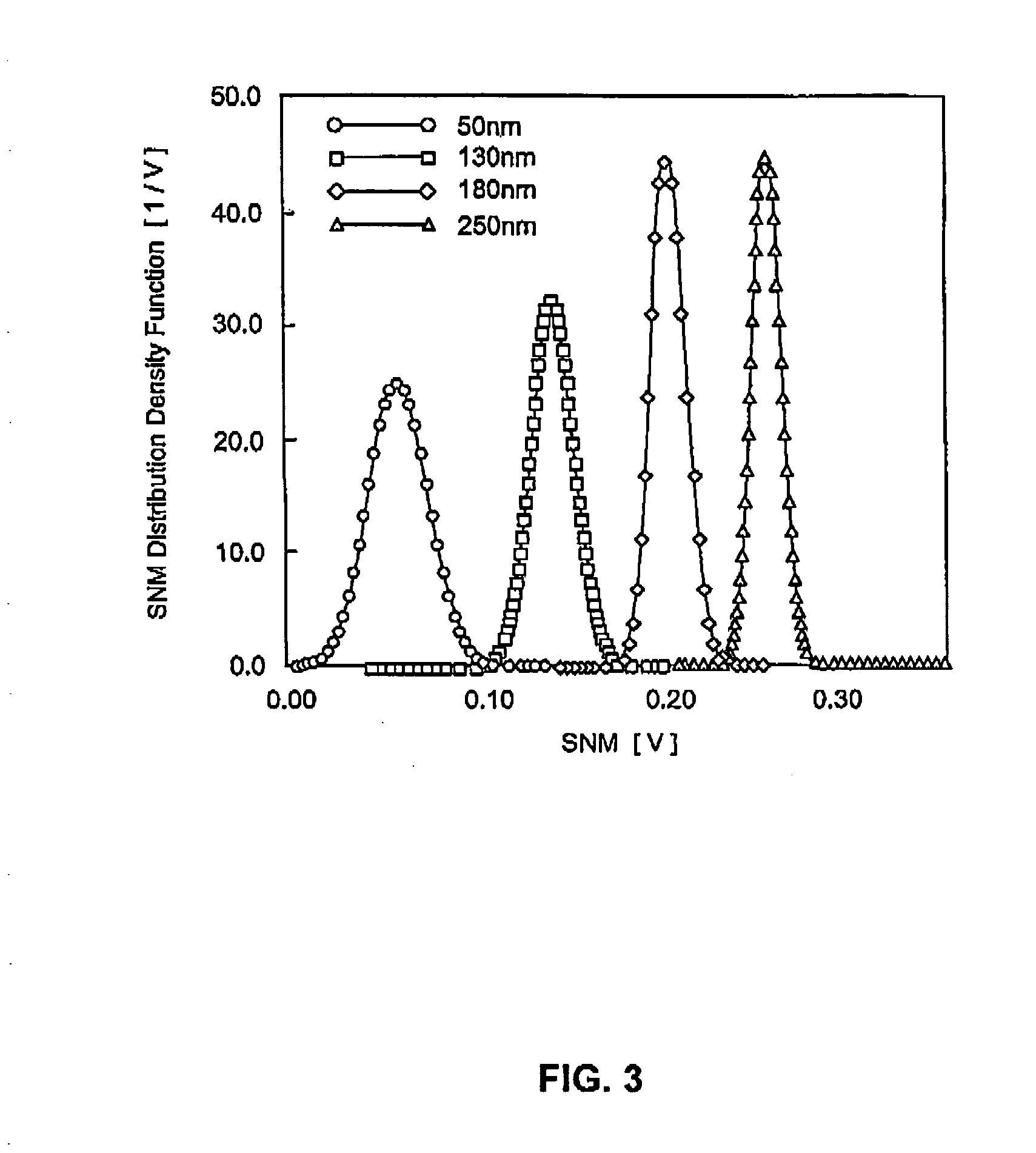Semiconductor memory device
a memory device and semiconductor technology, applied in semiconductor devices, digital storage, instruments, etc., can solve the problems of difficult stably holding data, remarkable deterioration in worst value of snm, and risk of corruption of stored data, so as to prevent data corruption, reduce memory cell dimension, and prevent data corruption
- Summary
- Abstract
- Description
- Claims
- Application Information
AI Technical Summary
Benefits of technology
Problems solved by technology
Method used
Image
Examples
first embodiment
[0068] A first embodiment according to the present invention is described with reference to FIGS. 7 to 9. FIG. 7 shows a circuit structure representing an SRAM cell of a static random memory of the first embodiment. FIG. 8 is shown a timing chart for read operation, (A) is shown the reading “0” and (B) is shown the reading “1”. FIG. 9 is shown a timing chart for write operation, (A) is shown the writing “0” and (B) is shown writing “1”.
[0069] The RAM cell, shown in FIG. 7, is comprised of seven transistors including a PMOS transistor P1 and an NMOS transistor N1 by which a first CMOS inverter is formed, a PMOS transistor P2 and an NMOS transistor N2 by which a second CMOS inverter is formed, NMOS transistors N3 and N4 playing a role as access means, and an NMOS transistor N5 playing a role as a storage control means. Here, the PMOS transistors P1, P2 form the inverter circuit to play a role as load transistors and the NMOS transistors N1, N2 play a role as drive transistors.
[0070]...
second embodiment
[0083] A second embodiment according to the present invention will be described with reference to FIG. 10. FIG. 10 is a view showing a circuit structure of a memory cell of an SRAM of the second embodiment according to the present invention. The second embodiment corresponds to a case wherein a connected position of the storage control transistor N5 in the memory cell of the SRAM of the first embodiment is altered and has the same structure as that of the first embodiment in other circuit structures. While with the first embodiment, the storage control transistor N5 is inserted to the source side of the drive transistor N2, the second embodiment allows the storage control transistor N5 to be inserted to the drain side of the drive transistor N2.
[0084] The SRAM cell of the second embodiment, shown in FIG. 10, is comprised of seven transistors including a PMOS transistor P1 and an NMOS transistor N1 by which a first CMOS inverter is formed, a PMOS transistor P2 and an NMOS transistor...
third embodiment
[0088] A third embodiment according to the present invention is described with reference to FIGS. 11 to 13. FIG. 11 is a view showing a circuit structure of a memory cell of an SRAM of the third embodiment. FIG. 12 is a time chart showing first operation timings and FIG. 13 is a time chart showing second operation timings.
[0089] The SRAM cell, shown in FIG. 11(A), is comprised of seven transistors including a PMOS transistor P1 and an NMOS transistor N1 by which a first CMOS inverter is formed, a PMOS transistor P2 and an NMOS transistor N2 by which a second CMOS inverter is formed, NMOS transistors N3 and N4 playing a role as an access means, and an NMOS transistor N5 playing a role as a storage control means.
[0090] The first CMOS inverter is comprised of the PMOS transistor P1 and the NMOS transistor N1 and applied with data appearing at the data storage node V2 as an input, thereby outputting data at a data storage node V1. The second CMOS inverter is comprised of the PMOS tran...
PUM
 Login to View More
Login to View More Abstract
Description
Claims
Application Information
 Login to View More
Login to View More - R&D
- Intellectual Property
- Life Sciences
- Materials
- Tech Scout
- Unparalleled Data Quality
- Higher Quality Content
- 60% Fewer Hallucinations
Browse by: Latest US Patents, China's latest patents, Technical Efficacy Thesaurus, Application Domain, Technology Topic, Popular Technical Reports.
© 2025 PatSnap. All rights reserved.Legal|Privacy policy|Modern Slavery Act Transparency Statement|Sitemap|About US| Contact US: help@patsnap.com



